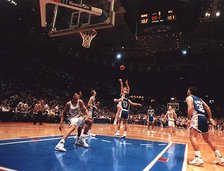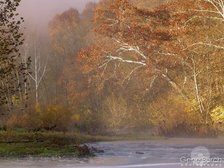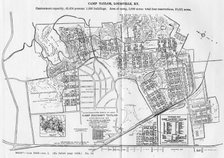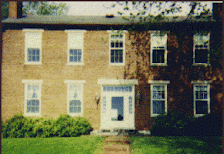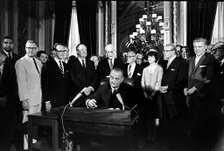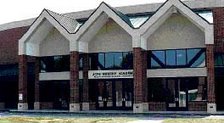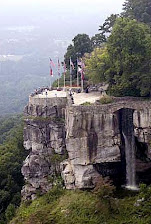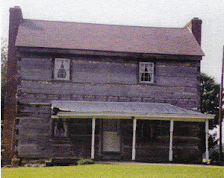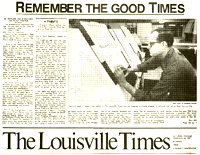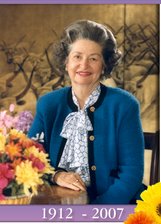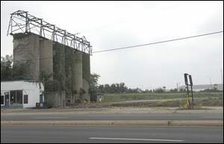691. Going my way?

This morning's drive gave me a new perspective on the old Louisville Male High School building on the corner once affectionately known as "Brook and Breck." As I was driving southbound on Brook Street, the majestic brick building, which dates from 1915 and is one of Louisville's most beautiful buildings, took on new beauty. This was the first time I had approached it from this direction, which was from the north, the perspective shown in this picture.
I continued my trek southward on Brook to Hill Street, where I turned right for a block, and turned right again, this time headed northbound on First Street. First Street originally ended a half block north of Hill at what is now Hill Bend Place. I continued north taking in the southern exposures of many homes, especially those on the east side of the street, for the first time. The smaller craftsman types homes which occupy Ouerbacher Court looked particualrly different from this angle. I continued northward past the home of my friend Ken Herndon, which sits at the northwest corner of 1st Street and Ormsby Avenue.
This persepctive on Ken's house was not new. We were walking the area back in 2004 when he was looking for a new house and first caught glimpse of this one while looking at another at 1313 S. 1st, a few hundred feet south of there. But, again, we were walking. This time I was driving.
I continued northward on 1st until one is forced to turn either left or right onto West or East College Street, respectively, as the oncoming traffic is literally that, oncoming and all one way headed your way.
Several years ago, the late George Unseld, Louisville's 6th District Councilman for many years, began talk of making First and Brook streets two-way thoroughfares. For at least the last sixty years, they've been one-directional - First Street southward and Brook Street northward. Especially south of Kentucky Street, both streets are heavily residential, occupying the eastern flank of Louisville's victorian masterpiece of a neighborhood, Old Louisville. 
The plan was to make the streets two-way from somewhere south of Broadway, where both have intersecting ramps with I-65, to Hill Street, generally accepted as the southern boundary of residential Old Louisville. South of Hill Street, Louisville's large educational campus begins to intermingle with the residences. Both the old and new Gavin Cochran Elementary School buildings are in the area, as well as Samuel V. Noe Middle School, and duPont Manual High School, all joined by the ever-expanding University of Louisville. But, I digress.
Councilman Unseld's proposal was met with both support and pushback. The residents wanted it; the city pushed back with a series of encumbrances seemingly designed to keep the Metro Council from ever changing any street from one-way to two, something the previous mayoral administration could and did do (perhaps illegally) on Main Street between 3rd and 4th with an Executive Order. A number of "percentages of residents' signatures" were suddenly needed to accomplish the plan. Unstated was the answer to the question will homeowners' signatures suffice or does it have to be the residents, even if they are renters, as there are a number of apartments and condos scattered in the several two, three, and four story homes in the neighborhood. And how do you count vacant residences and businesses into the equation? Every time a question was answered, either the percentages changed or a new question was asked.
The truth is the pattern of one-way streets in Louisville is governed by a vote of the Metro Council, successor to the old Board of Aldermen. It is a part of the traffic code, which itself is a part of the Louisville Metro Code of Ordinances. Nowhere in that code were any of these percentages mentioned. To some, including me, it seemed that a majority vote of the Council should have sufficed to change the traffic pattern. As one to-remain-nameless assistant county attorney often says (about any matter), any group of 14 votes of the 26 member council can change the local code. To be honest, I did not support the change; but also, to be honest, it was none of my business. I did not live in the affected area, although I did at one time.
Councilman Unseld did not live to see the street pattern changed. Upon his death last year, he was succeeded by an interim councilman, Dr. Deonte Hollowell, who was succeeded last November by the newly elected David James. Both Dr. Hollowell and Mr. James continued Mr. Unseld's efforts at changing the pattern.
During the last several weeks, driving in the area meant noticing the new two-facing stoplights and a number of new directional and no-turn signs. Early this morning, a double-yellow line was striped down the middle of both streets, effectively dividing them into two-way thoroughfares, thus completing the work began by the late Councilman Unseld several years ago.
I might note that when Mr. Unseld began this plan, no busses travelled along Brook Street, thus there was no need for any wide-berth swings which the busses need on some corners. The two most notable of these corners are 4th and Broadway, where southbound 4th Street busses swing widely into northbound 4th Street, and 3rd and Woodlawn, where northbound 4th Street busses swing widely into southbound 3rd Street. In the interim, the northbound Preston/18th Street line has been moved in this area from Preston/I-65/Jackson to Preston/Hill/Brook/Burnett/Preston/Jackson, passing along the new route, I might add, the eating establishment, Juanita's Burger Boy, of my friend Dan Borsch. Again, I digress.
The newly striped lines at Brook and Hill will, no doubt, have to be restriped to accomodate these northbound busses, as the current striping doesn't, something I experienced this morning when one of the busses attempted the turn with me in an up-close-and-personal perspective - perhaps too close.
So, if you are in the area, watch out for the new double yellow lines - and that TARC turning onto Brook from Hill. That bus is bigger than your car.
Happy Trails.





